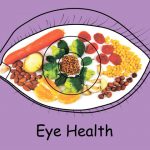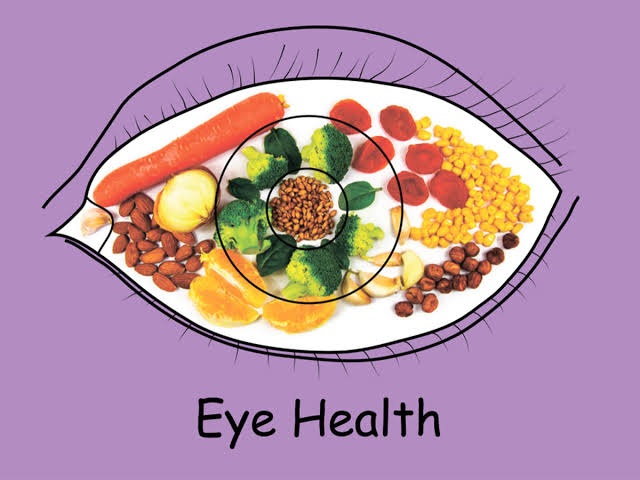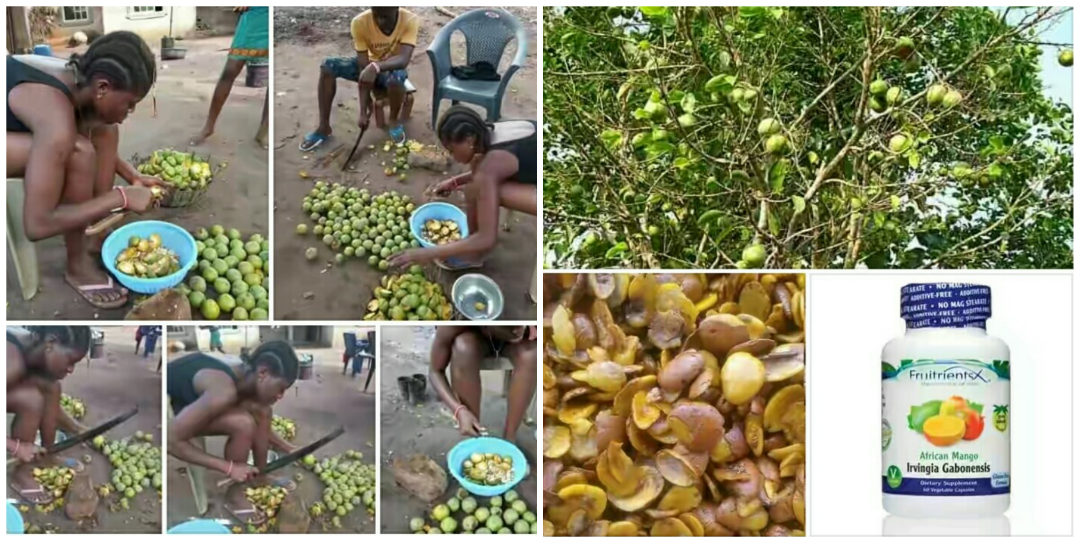FOODS THAT WILL IMPROVE YOUR EYESIGHT (EYES FUNCTION)
Most people blame ageing process as the cause of decline in vision, but in reality, this problem is really more of a side effect of our modern lifestyle.
TO GOD BE THE GLORY, THANKS TO HEALTHY LIFESTYLE (GOOD DIET AND EXERCISE), DESPITE MY AGE, I STILL DO NOT REQUIRE EYE GLASSES TO IMPROVE MY EYESIGHT. Ageing does not automatically equate to decreased vision, provided that we properly nourish your eyes through the years. Age-related macular degeneration (AMD) is the most common cause of blindness among the elderly, followed by cataracts.
The pathology of both of these conditions has been attributed to free radical damage, and the condition is in many cases largely preventable through an antioxidant-rich diet. There are some health conditions that can also have a detrimental impact on your eyesight, such as obesity, diabetes and hypertension, which are primarily lifestyle-driven.
It is quite unfortunate to mention that some of the foods that are very effective in improving eyesight are either not present on the African Continent or are very expensive.
When it comes to whole foods that nourish our eyes, BLACK CURRANTS appear to be a cut above the rest. Scientists have found that black currants are far more powerful than lutein, zeaxanthin, or bilberry, which have are known to support eye health. Black currants contain some of the highest levels of anthocyanins found in nature (~190-270 mg/100 g, which is far more than that found in bilberries. They are also rich in omega-3 essential fatty acids, lending added support to their anti-inflammatory properties. Anthocyanins are flavonoids, and the health benefits of these antioxidants are extensive.
For medicinal purposes, many opt for using black currant seed oil, which is available in Europe, North America and Australia in capsule form. But eating the whole food is always the best option, especially when they are in season.
BILBERRIES are another powerhouse food for eye health. Bilberry, which is a close relative of the blueberry, is another nutritional powerhouse for your eyes. Its nearly black berries also contain high amounts of anthocyanins, just like the black currant.
Contrary to black currant, bilberries tend to be difficult to grow and cultivate, and are typically collected from areas where they grow in the wild. Many of the forest areas around northern and central Europe are known for their bilberry patches, where people pick them each year. Research suggests that bilberry may be of particular benefit for inhibiting or reversing macular degeneration.
KALE AND OTHER LEAFY GREENS ARE GOOD FOR YOUR EYES: Lutein and zeaxanthin are both important nutrients for eye health as both of them are found in high concentrations in your macula, which is the small central part of your retina responsible for detailed central vision.
More specifically, lutein is also found in your macular pigment – known for helping to protect your central vision and aid in blue light absorption – and zeaxanthin is found in your retina.
Though there is no recommended daily intake for lutein and zeaxanthin, but scientific studies have found health benefits for lutein at a dose of 10 mg per day, and at 2 mg/day for zeaxanthin.
Studies also suggest that dietary intake of approximately 6-20 mg lutein daily may be necessary for adequate eye health support. Both lutein and zeaxanthin are primarily found in green leafy vegetables, although zeaxanthin is far scarcer than lutein.
KALE AND SPINACH are two of the most lutein-rich foods, but they can also be found it in CARROTS, SQUASH, AND OTHER ORANGE AND YELLOW FRUITS AND VEGETABLES. Both lutein and zeaxanthin are carotenoids called xanthophylls, which give plants and vegetables their yellow-orange color, and the name “lutein” comes from the Latin word “luteus,” which means “yellow.” If you remember this, it may help you pick out vegetables that are likely to contain higher amounts of these two nutrients.
EGG YOLKS, ESPECIALLY FROM ORGANIC FARMS ARE ANOTHER IMPORTANT FOOD FOR EYE HEALTH: Following is a list of lutein-rich foods. Kale is a clear forerunner, with spinach in close second. Most of these also contain zeaxanthin, albeit in lesser quantities than lutein. Keep in mind that in order to receive all the benefits of the nutrients found in these foods, you need to consume them as close to raw as possible.
Once you heat spinach or egg yolks, for example, the lutein and zeaxanthin become damaged, and will not perform as well in preventing degeneration of your macula. Accessory micronutrients in the foods that enhance their action will also be damaged.
One of the best ways to take advantage of these nutrients is by eating raw egg yolks (I DON’T RECOMMEND THIS, UNLESS YOU ARE SURE THE EGGS ARE DEVOID OF DANGEROUS BACTERIA). There is about 0.25 mg each of lutein and zeaxanthin in one egg yolk, and while this is lower than many of the vegetables, it is in a highly absorbable, nearly ideal form.
Once again, just keep in mind that when you eat eggs raw, finding a high-quality source becomes critically important, as factory farmed eggs are far more prone to cause foodborne illness.
Making sure your eggs are from organically-raised and pastured hens will dramatically reduce such risks. Free-range eggs also contain higher levels of nutrients overall.
It is also important to note that lutein is an oil-soluble nutrient, so if you eat the vegetables without some oil or butter your body can’t absorb the lutein.

Credit: Times of India
Adding a little bit of healthy fat, such as olive oil, coconut oil, or raw organic butter, will maximize your lutein absorption.
WILD FATTY FISH, ESPECIALLY SALMON CONTAINS TWO POTENT EYE NUTRIENTS: Without fats such as omega-3, your cells cannot function properly, and this applies to your eyes as well. Fish has always been an ideal source of omega-3 fats EPA and DHA, but in recent years, most fish have become too contaminated by environmental pollution to be safely eaten in large quantities on a regular basis.
When choosing fish, it is critical to understand that while fish have significant health benefits, it is important to select fish that are low in mercury contamination.
Wild salmon fits the bill, as it is very high in healthful fats such as omega-3s, and low in mercury. The omega-3 fat DHA is concentrated in your eye’s retina.
It provides structural support to cell membranes that boost eye health and protect retinal function, and research suggests eating more foods rich in these fats may slow macular degeneration.
For example, research has shown that:
(1) Those with the highest intake of animal-based omega-3 fats have a 60 percent lower risk of advanced macular degeneration, compared to those who consume the least;
(2) A scientific study conducted in 2009 study also found that those with the highest consumption of omega-3 fats were 30 percent less likely to progress to the advanced form of the disease over a 12-year period;
(3) Another study published in 2009 also found that those with diets high in omega-3 fats along with vitamin C, vitamin E, zinc, lutein, and zeaxanthin, had a lower risk of macular degeneration. Wild salmon also contains another nutrient that can do “wonders” for your eyesight, namely astaxanthin.
Astaxanthin is produced only by the microalgae Haematococcus pluvialis when its water supply dries up, forcing it to protect itself from ultraviolet radiation. It is the algae’s survival mechanism -astaxanthin serves as a “force field” to protect the algae from lack of nutrition and/or intense sunlight. There are only two main sources of astaxanthin: the microalgae that produce it, and the sea creatures that consume the algae (such as salmon, shellfish, and krill).
Compelling evidence suggests this potent antioxidant may be among the most important nutrients for the prevention of blindness.
It’s a much more powerful antioxidant than both lutein and zeaxanthin, and has been found to have protective benefits against a number of eye-related problems.
OTHER NATURAL STRATEGIES THAT HELP PROTECT YOUR VISION
There are natural, common-sense strategies we can employ to help protect our healthy vision, starting with your diet. As discussed above, certain foods are more or less necessary for optimal vision, and can go a long way toward protecting your eyesight throughout life.
This includes leafy green and brightly colored vegetables, organic pastured egg yolks, black currants, bilberry, and seafood rich in omega-3s and astaxanthin while being low in mercury contamination wild salmon topping the list of fish that meet these requirements.
Besides these dietary suggestions, here are a few other lifestyle strategies that can help optimize your eye health and eyesight
They are as follows:
a) Quit smoking, if you currently do. Smoking ramps up free radical production throughout your body, and puts you at risk for less-than-optimal health in many ways.
If you want healthy vision for your whole life, you cannot afford to risk less-than-optimal eye health with cigarettes;
b) Care for your cardiovascular system by getting regular exercise. High blood pressure can cause damage to the miniscule blood vessels on your retina, obstructing free blood flow.
A regular, effective exercise program consisting of aerobics, peak Fitness exercises, core building and strength training, can go a long way toward reducing your blood pressure. It is also critical for optimizing your insulin and leptin levels;
c) Avoid sugars, particularly fructose. This is another primary way to maintain optimal blood pressure. Scientific studies show that consuming 74 grams or more per day of fructose (equal to 2.5 sugary drinks) increases your risk of having blood pressure levels of 160/100 mmHg by 77 percent;
d) Normalize your blood sugar. Excessive sugar in your blood can pull fluid from the lens of your eye, affecting your ability to focus. It can also damage the blood vessels in your retina, thereby obstructing blood flow.
To keep your blood sugar in a healthy range, follow my comprehensive nutrition guidelines, exercise, and avoid excess sugar, especially fructose;
e) Avoid trans fats. A diet high in trans fat appears to contribute to macular degeneration by interfering with omega-3 fats in your body.
Trans fat is found in many processed foods and baked goods, including margarine, shortening, fried foods like French fries, fried chicken, doughnuts, cookies, pastries, and crackers;
f) Avoid aspartame. Vision problems are one of the many potential acute symptoms of aspartame poisoning. Aspartame hinders healthy eyesight.
These are the thoughts of:
Sa’eed Halilu Bawa
Senior Lecturer (Associate Professor) at University of the West Indies, St. Augustine Campus, Trinidad.
Studied Food and Nutrition Sciences, Dietetics at Kaduna Polytechnic, Nigeria; Warsaw University of Life Sciences, Poland.
























